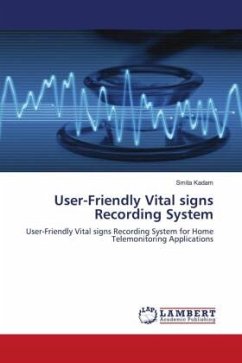Among all the vital signs that have to be acquired using telemonitoring systems, the electrocardiogram (ECG) is one of the most challenging due to the major complexity of the operations to be performed. Conventional ECG devices, in fact, require the proper placement of a number of adhesive disposable electrodes on the chest [5]. Since the majority of CHF patients is constituted by elderly people, that have low familiarity with technology and reluctance to execute complex operations, conventional ECG devices are not an optimal solution for independent home telemonitoring. It is important, to encourage elderly people to perform periodic ECG recordings as well as the measurements of other vital signs. This objective can be pursued by developing measurement devices and methods that are easy and quick to use.Among all the vital signs that have to be acquired using telemonitoring systems, the electrocardiogram (ECG) is one of the most challenging due to the major complexity of the operations to be performed. Conventional ECG devices, in fact, require the proper placement of a number of adhesive disposable electrodes on the chest [5].
Bitte wählen Sie Ihr Anliegen aus.
Rechnungen
Retourenschein anfordern
Bestellstatus
Storno








